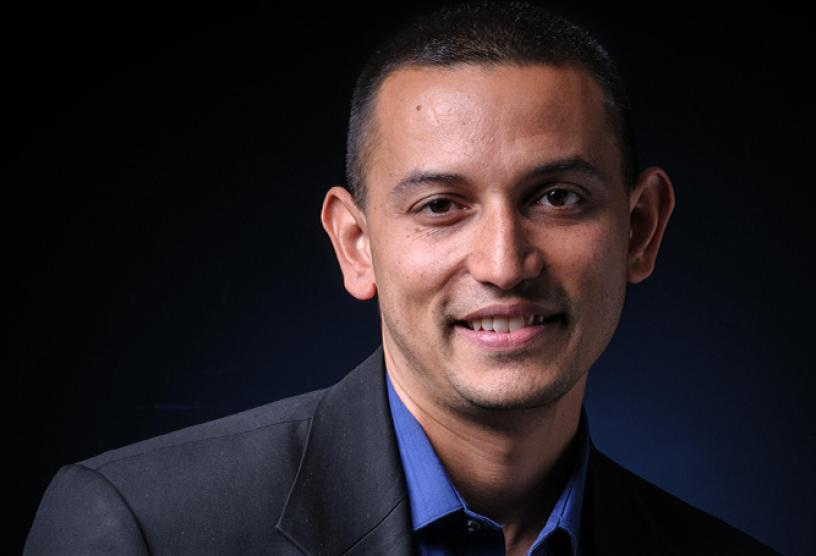
Spirituality and Meaning-Making Across Contexts

A Structural Topic Modeling Approach to Fetzer’s Spirituality Study in the United States
In order to further understand common themes among increasingly diverse expressions of spirituality, we used structural topic modeling to infer the latent dimensions inherent in the narratives of 16 in-depth interviews from the Fetzer Institute’s Study of Spirituality in the United States (SSUS). STM was developed in the interdisciplinary domains of statistics, computer science, machine learning, and computational linguistics and employs a collection of statistical methods of text data analysis to identify the hidden thematic structure in large archives of semantic data.
Participants
Sixteen interviews were chosen out of 26 conducted, based on availability and quality of transcripts. Of the 16 participants (8 female, 8 male), 12 (75%) were white, 2 (13%) were Asian, 1 (6%) was Black and 1 (6%) was other, not Hispanic. The mean age for the sample was 42. Most participants rated themselves as having some degree of spirituality: 38% as slightly spiritual, 25% as moderately spiritual, 25% as very spiritual, and 13% as not spiritual at all. Religious affiliation reported was diverse: 19% Protestant, 19% Muslim, (19% agnostic, 13% Buddhist, 13% atheist, 12% nothing in particular, and 6% Christian Orthodox.
Summary of Results and Findings
Following elaborate STM procedures, we identified 1,298 terms that were analyzed, resulting in a three-topic model as the best fit for the interviews. To name the topics, an ecological lens was chosen reflecting systems in which spirituality occurs: Individual, Transcendent, and Social, reflecting different systems in which spirituality takes place. To comprehend the meaning and the nature of each topic, we further investigated the segments of text connected to the top-ranked terms.
Reviewing the demographics and the relevant segments of text revealed that all three topics include individuals who identify across a variety of spiritualities and religions. The participants also reported a range in levels of spiritual commitment. For example, “Nones,” “Dones,” “Done with one religion (and/or onto the next),” and more orthodox believers were represented across the topics. As a whole, the interviewees have developed their own personal approach to spirituality. Overarching themes include goodness (no matter what their belief or nonbelief, the emphasis is on identifying and pursuing goodness within and a good life); exploration and evaluation of beliefs and meaning; communion (with others they know, with nature, with greater humanity, the planet); values (that motivate prosocial and civic action); and pursuit of a coherent life narrative. All except one participant, the most religious, talked about needing to create their own personalized definition of spirituality in order to live out their spirituality authentically. All participants named a referent of transcendence (e.g., God, nature, truth). They generally described intentional and rigorous reflection processes. Some elaborated on feelings associated with communion, and some articulated how their inner life informed their outer life. The paths these interviewees take are not linear, and not all share the same influences.
The three-topic model reveals some distinctions across these common themes and offers a contextual lens to these diverse accounts of spirituality. Review of the segments of text associated with each topic suggested an ecology of spirituality, with each topic representing the dominant system in which spirituality transpired for the participants associated with it:
- Topic 1, Individual’s top-ranked terms and related segments of text capture how interviewees engage with spirituality predominantly through self-reflection. Regardless of their referent of transcendence—which included Jesus, the planet, goodness, and science—these participants offered rich descriptions of their understanding of the source of transcendence and how that gives them meaning and informs their values, community, and commitments. Many also described how their spiritual values inform their actions.
- Topic 2, Transcendent’s top-ranked terms represent the names, nature, and worldly presentation of and communion with their referent of transcendence. Participants’ narratives revealed their beliefs about transcendence, whether in Jesus, nature, or math. Interviewees discussed their experiences and feelings of connection to transcendence and their efforts to create opportunities through which they could share this connection communion with others.
- Topic 3, Social’s top-ranked terms are about how, where, and in what relation the spirituality of the interviewees had been formed. Interviewees shared formative experiences at home, in religious congregations, and in the community that informed the spirituality they continue to pursue.
The findings of this three-topic model highlight that spirituality co-occurs at the individual, social, and transcendent levels. Our study sheds light on both the contrasting and unified expressions of spirituality as it is lived out in the United States today and offers vivid descriptions from diverse lived experiences. These findings emphasize that spirituality is lived out not only in esoteric or other-worldly spheres but is also embodied and engaged in many psychological processes, and it is embedded and lived out and influenced among persons, communities, and nature.
Sung Kim, PhD; Stephanie Trudeau, PhD; and Pamela Ebstyne King, PhD, are at the Thrive Center for Human Development at Fuller Theological Seminary.

